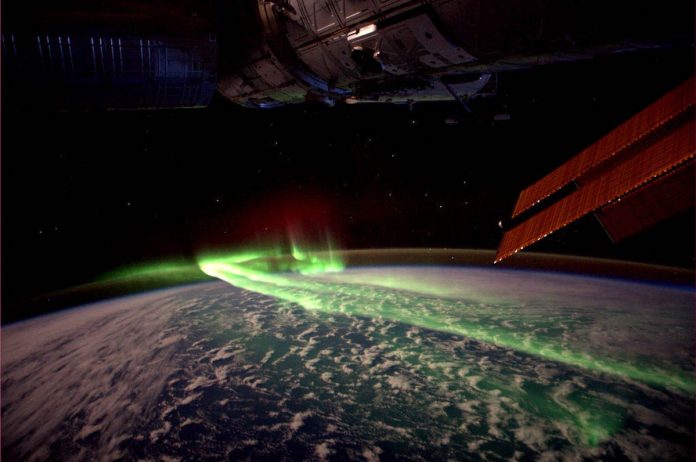New study suggested that a solar eclipse over the Arctic changes auroras in both of Earth’s hemispheres. This happened because of connections through the planet’s magnetic field. This finding will help scientists to predict changes in the near-Earth environment which interfere with satellite communication.
The moon’s shadow darkened much of the Earth’s northern polar region on 10 June 2021. This event had given scientists an opportunity to explore the impacts natural events on Earth’s geospace.
The eclipse affected auroras in both the Northern and Southern hemispheres. The study has been published in the AGU journal Geophysical Research Letters.
Scientists explained auroras
Auroras are the shimmering light that shows up in the sky and then flare up when solar storms shoot out energy and particles. These particles interact with gases in the atmosphere. Some particles travel along the lines of Earth’s magnetic field to the poles. This creates the northern lights in the Northern Hemisphere and the southern lights in the South.
In the new the scientists explained for the first time, how an eclipse affects the coupling between the ionosphere. In a region where energy from the sun ionizes the atmosphere and auroras occur there. Magnetosphere and the bubble around Earth are created by Earth’s magnetic field.
Scientists discovered that the eclipse altered the local atmosphere under the moon’s shadow. It also caused rings around the poles to form in the currents in the ionosphere. It has changed the activity of the auroras in both hemispheres. The rings are created from the disturbances to the electron density in the atmosphere.
The new finding improved scientists’ understanding of the geospace environment. This will help scientists to predict the effects from future eclipses. This also illustrates the sizable impact of the solar eclipse on the ionosphere. This can absorb and reflect the radio signals used by Global Positioning System satellites. This creates disturbances in communication and navigation.
Ringing the ionosphere
Geospace covers the upper atmosphere of Earth to the edges of Earth’s magnetic field. This includes the ionosphere. Ionosphere comprises regions of the upper atmosphere and have large numbers of electrically charged ions and electrons. Energy from the sun knocks electrons off of gas molecules in the atmosphere and charged particles occur. So, the numbers increase during the day and drop at night.
In previous scientists found solar eclipse can reduce the density of particles in the ionosphere.
In the new study, scientists developed a model that includes the upper atmosphere, the magnetosphere and electrical currents flowing in this system. Scientists used it to understand how the June solar eclipse affected Earth’s geospace.
The new system is complicated. So, scientists focused on the currents flowing between the magnetosphere, ionosphere and magnetic field lines. Scientists noticed these lines run out from the South Pole to the North Pole.
Scientists got surprised at the fact that the eclipse caused stronger auroral activity in the Southern Hemisphere than in the Northern Hemisphere.

